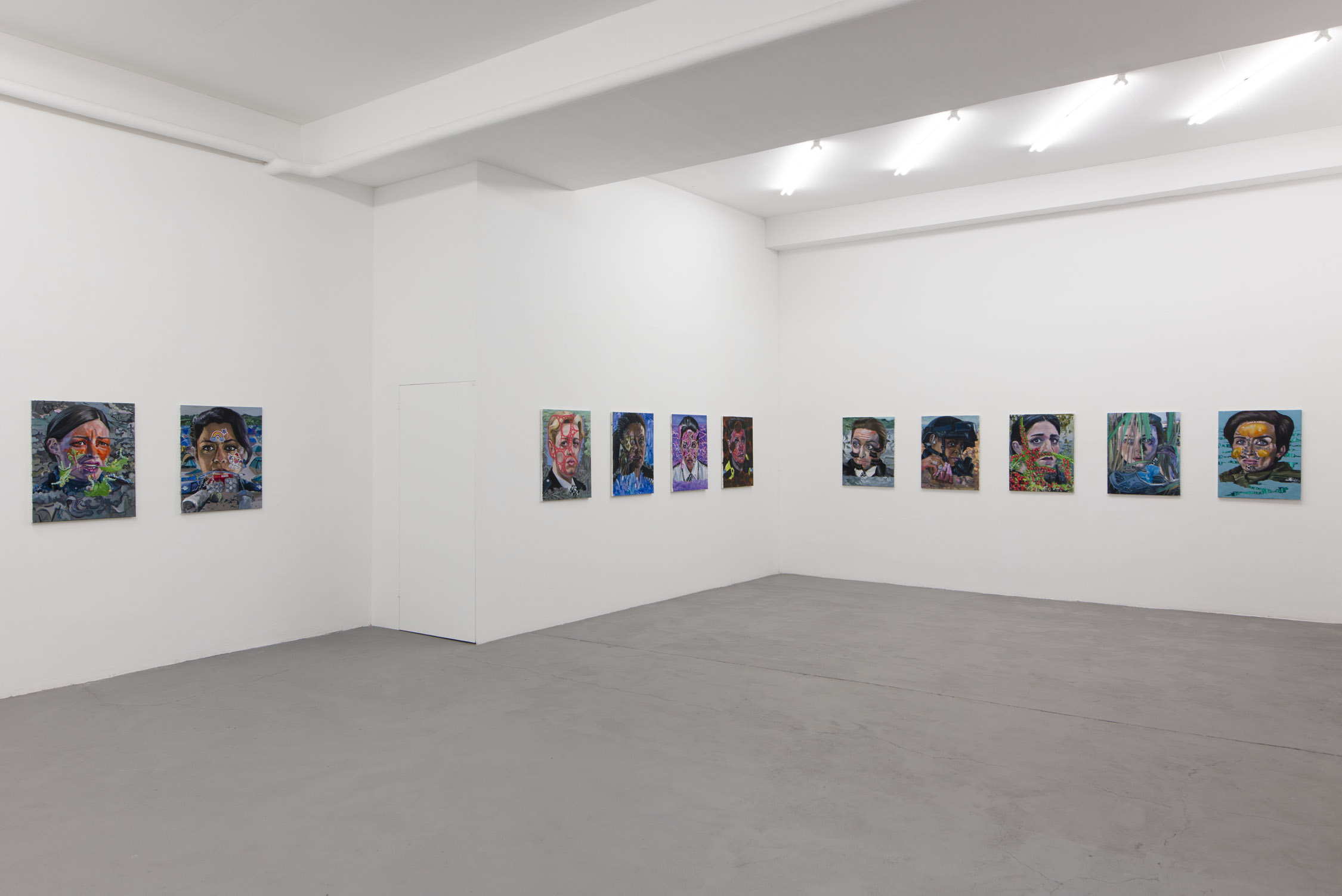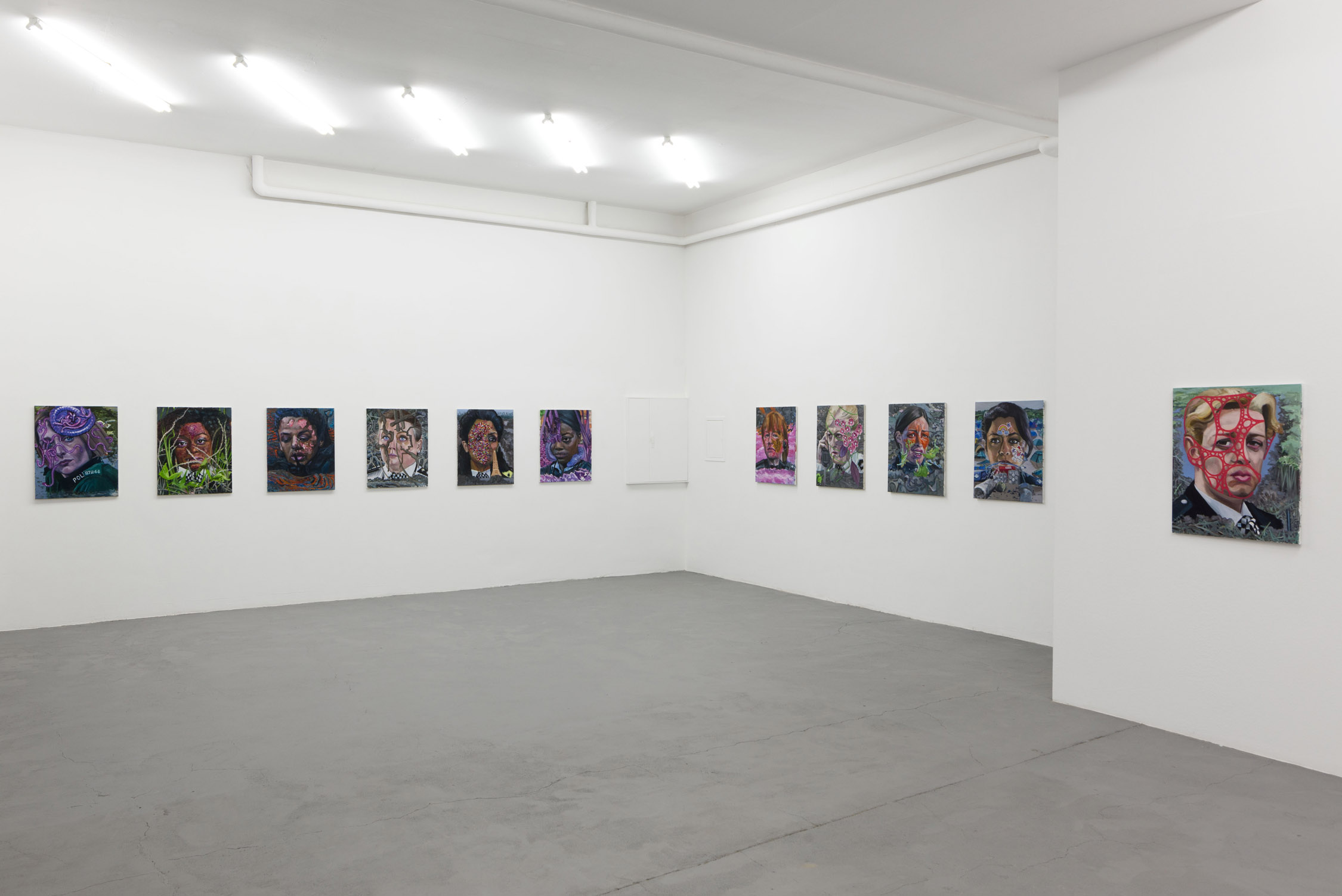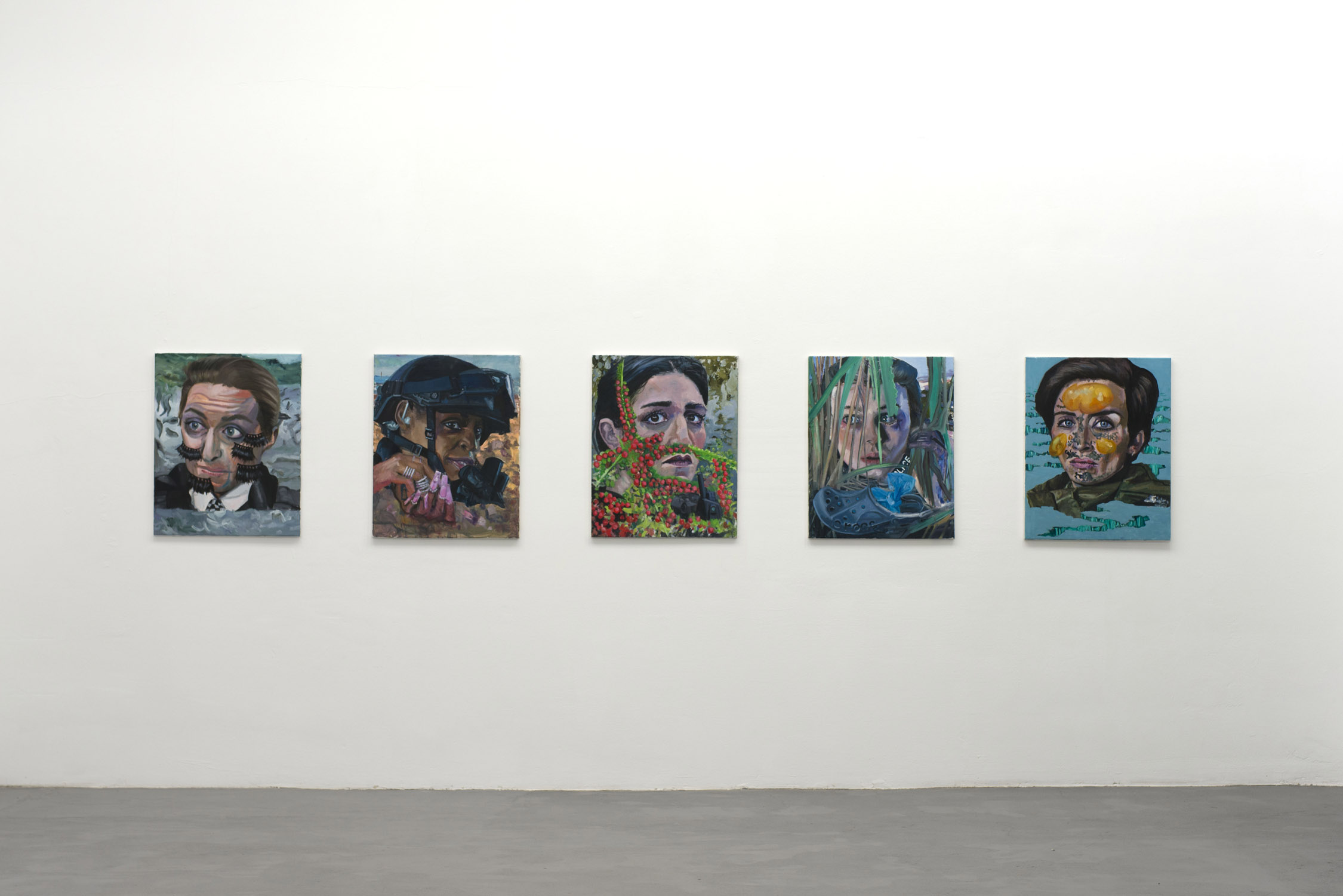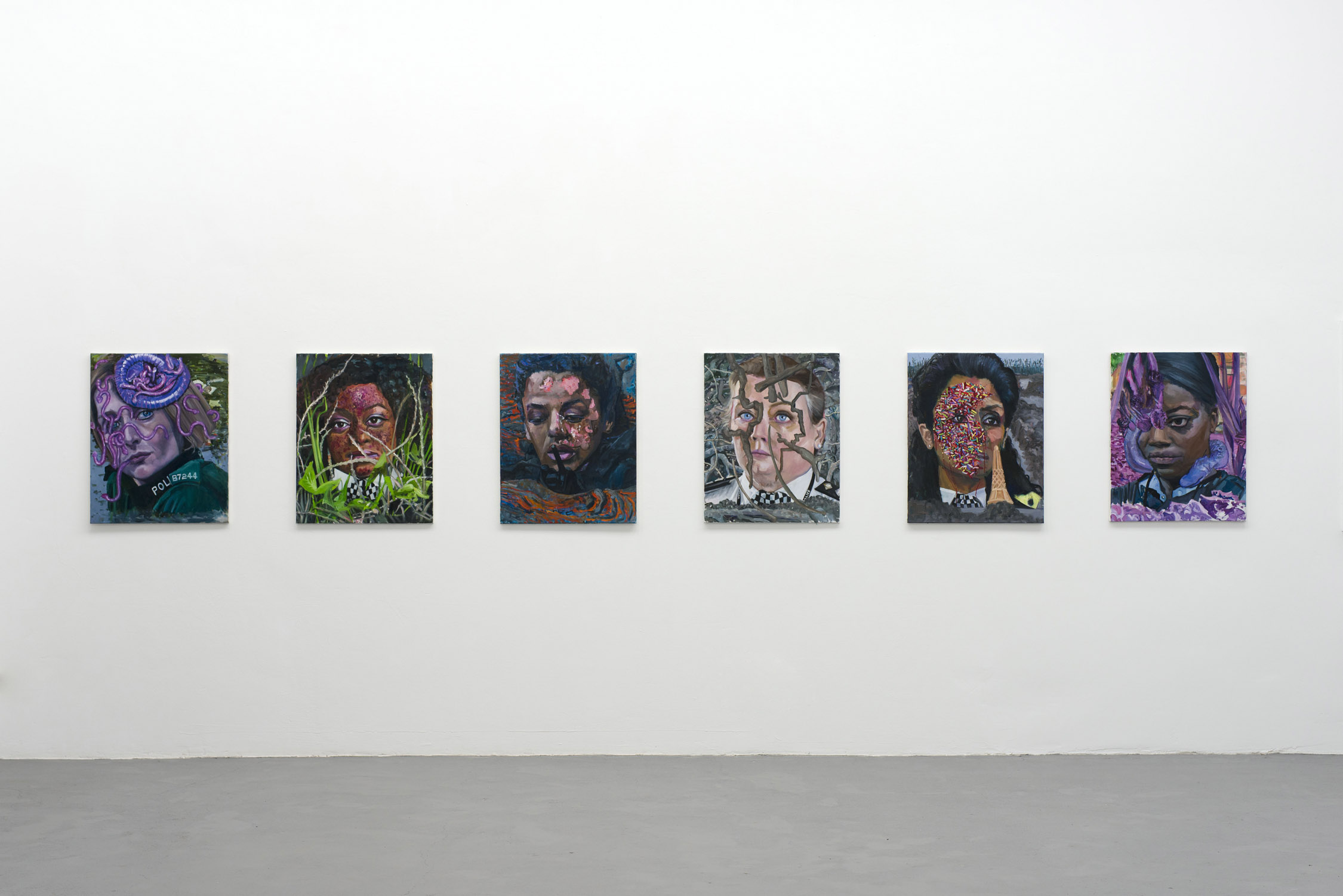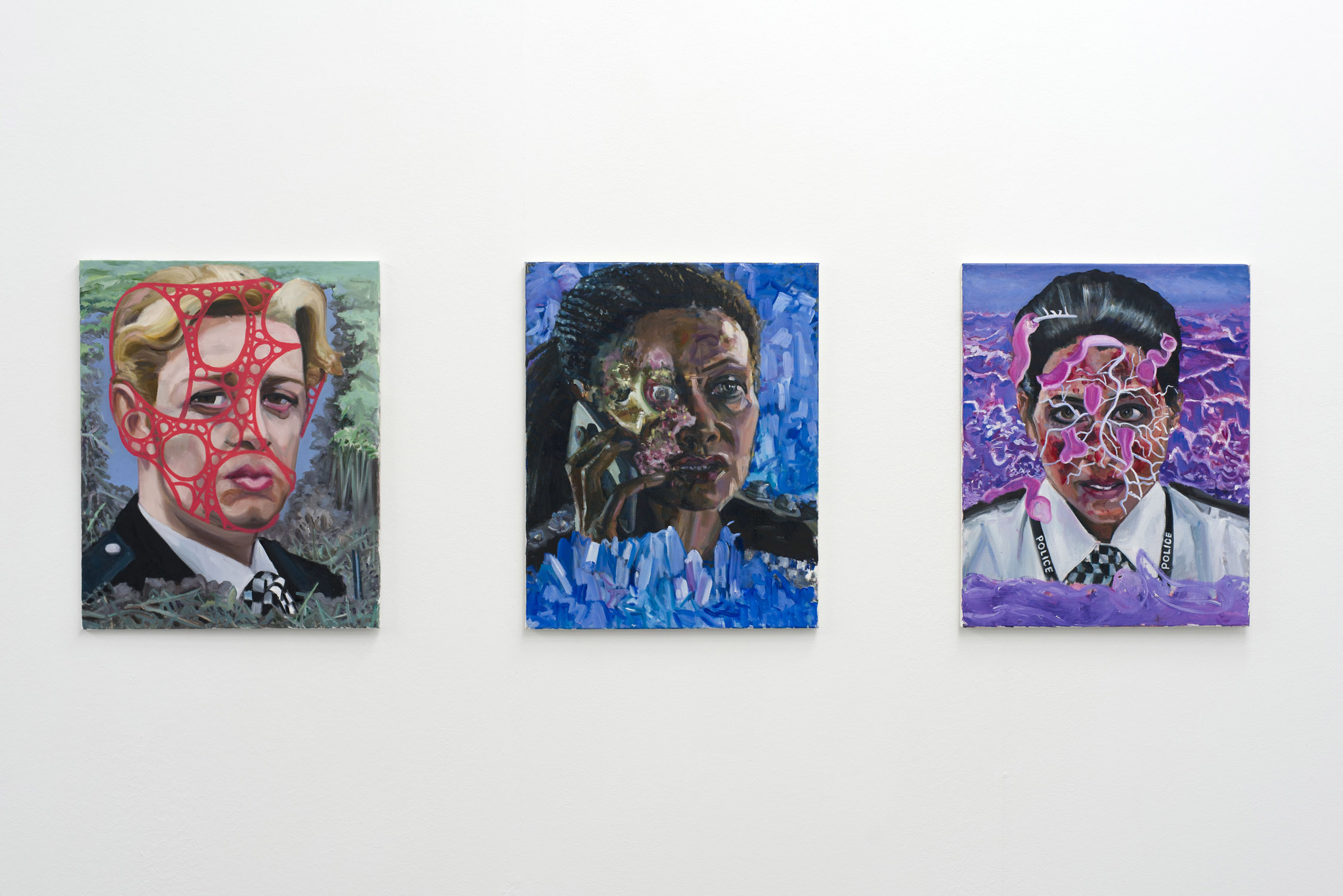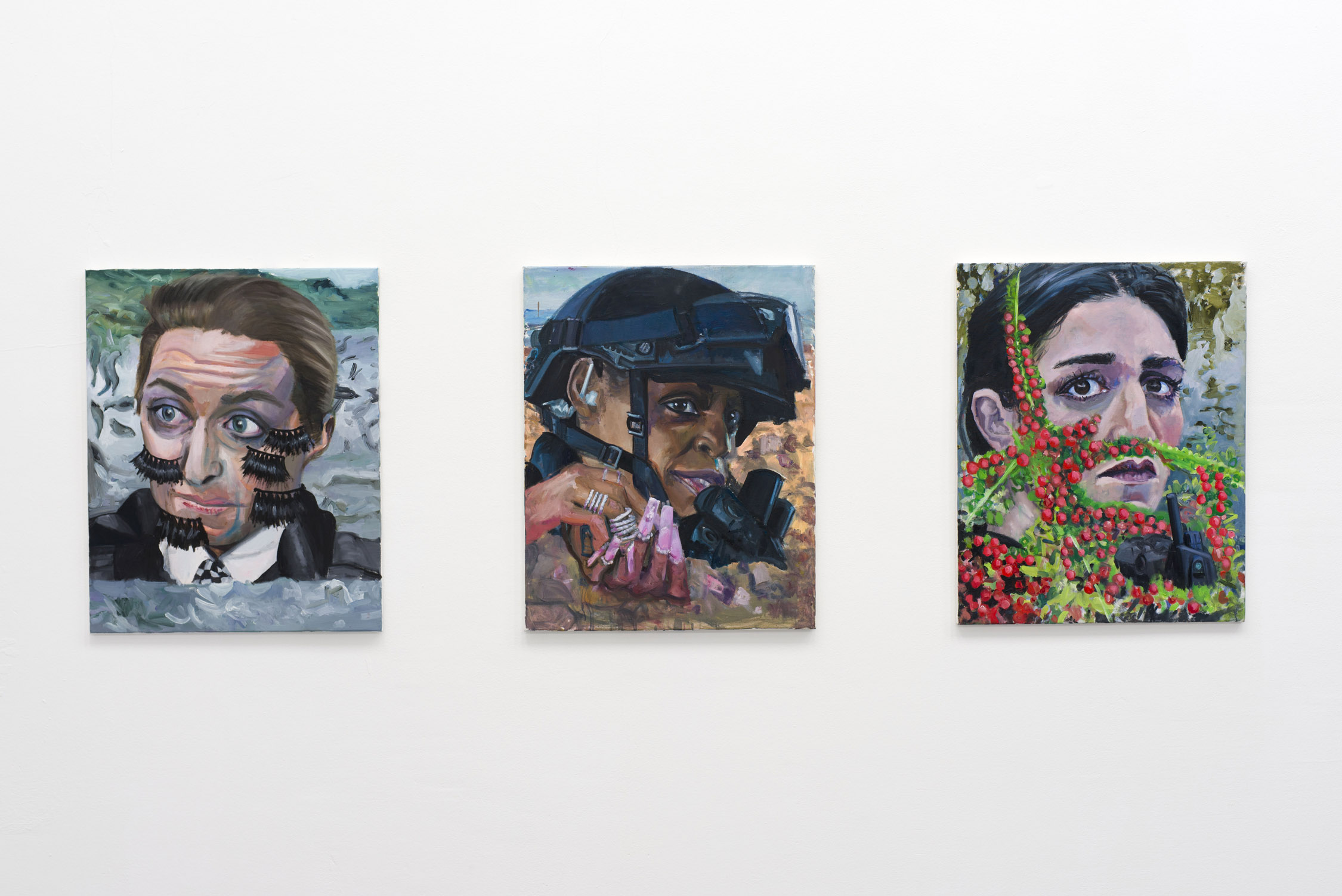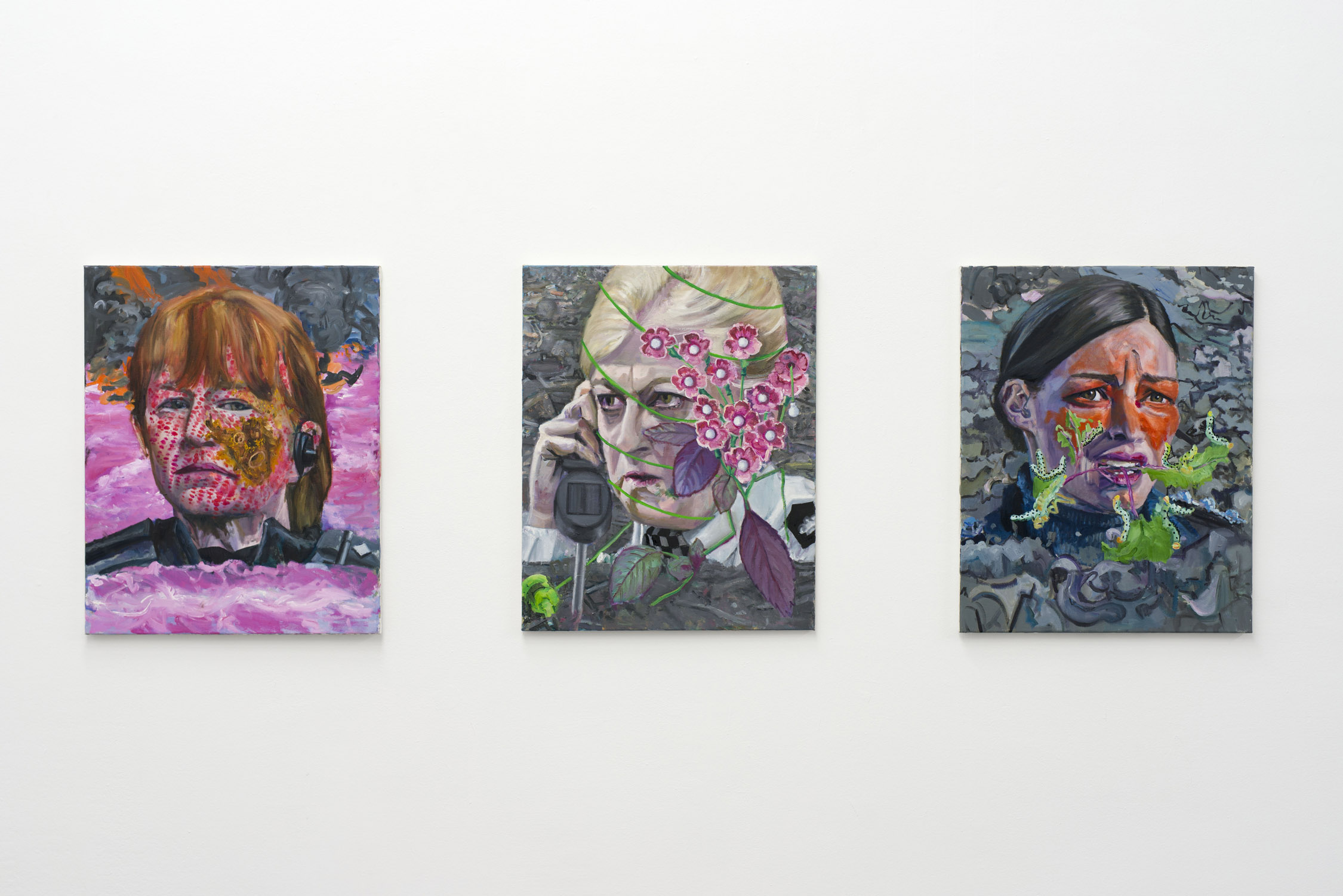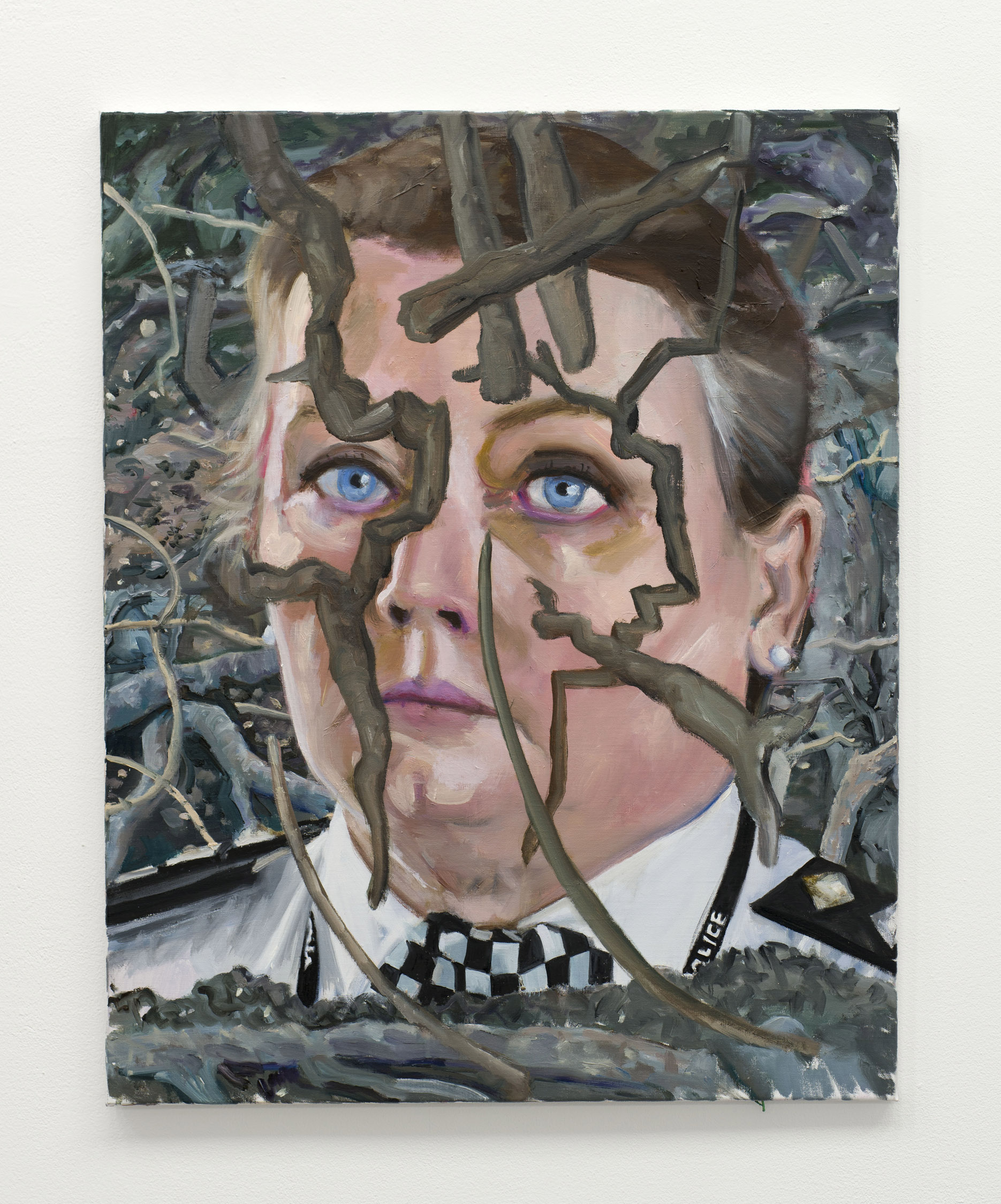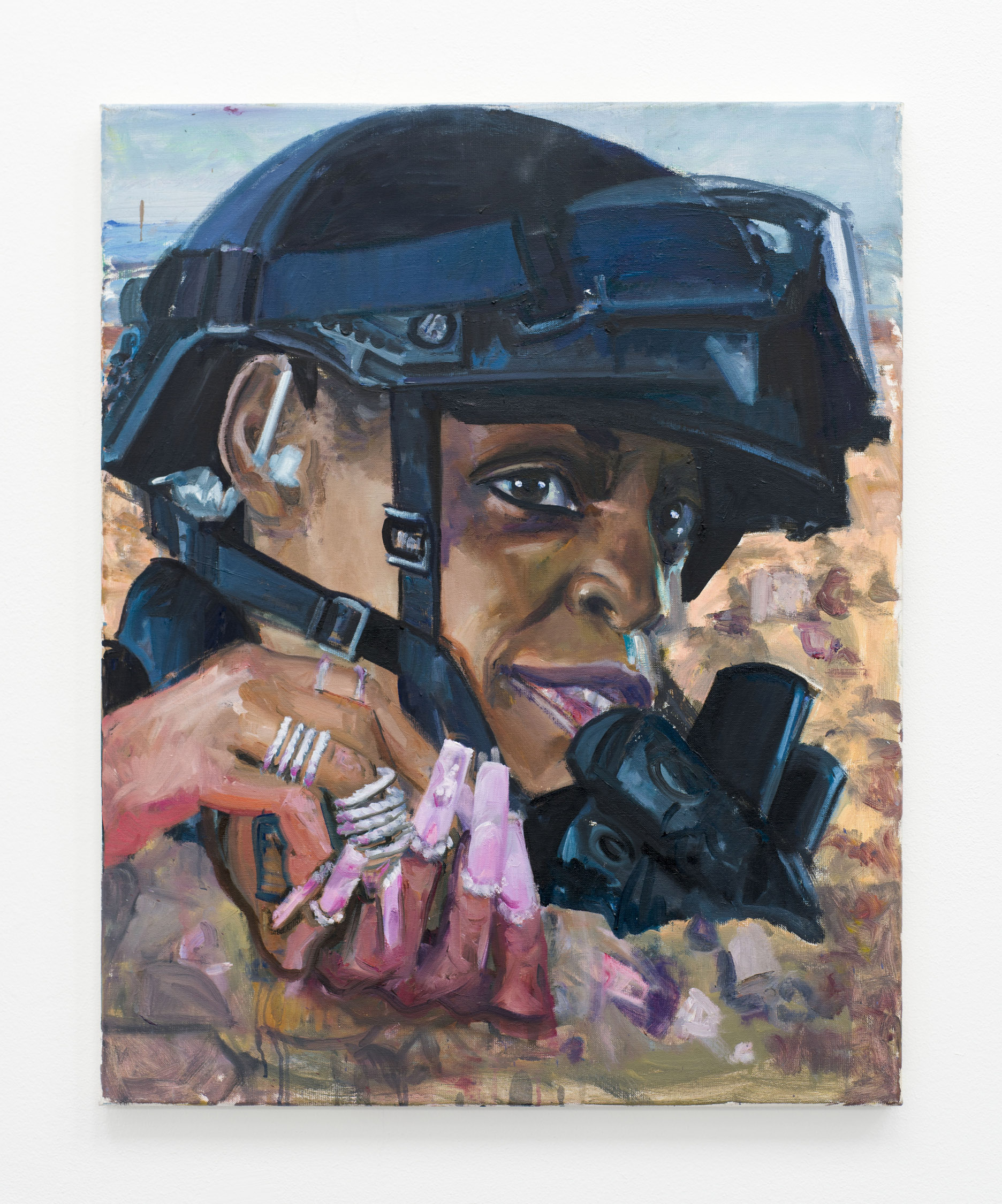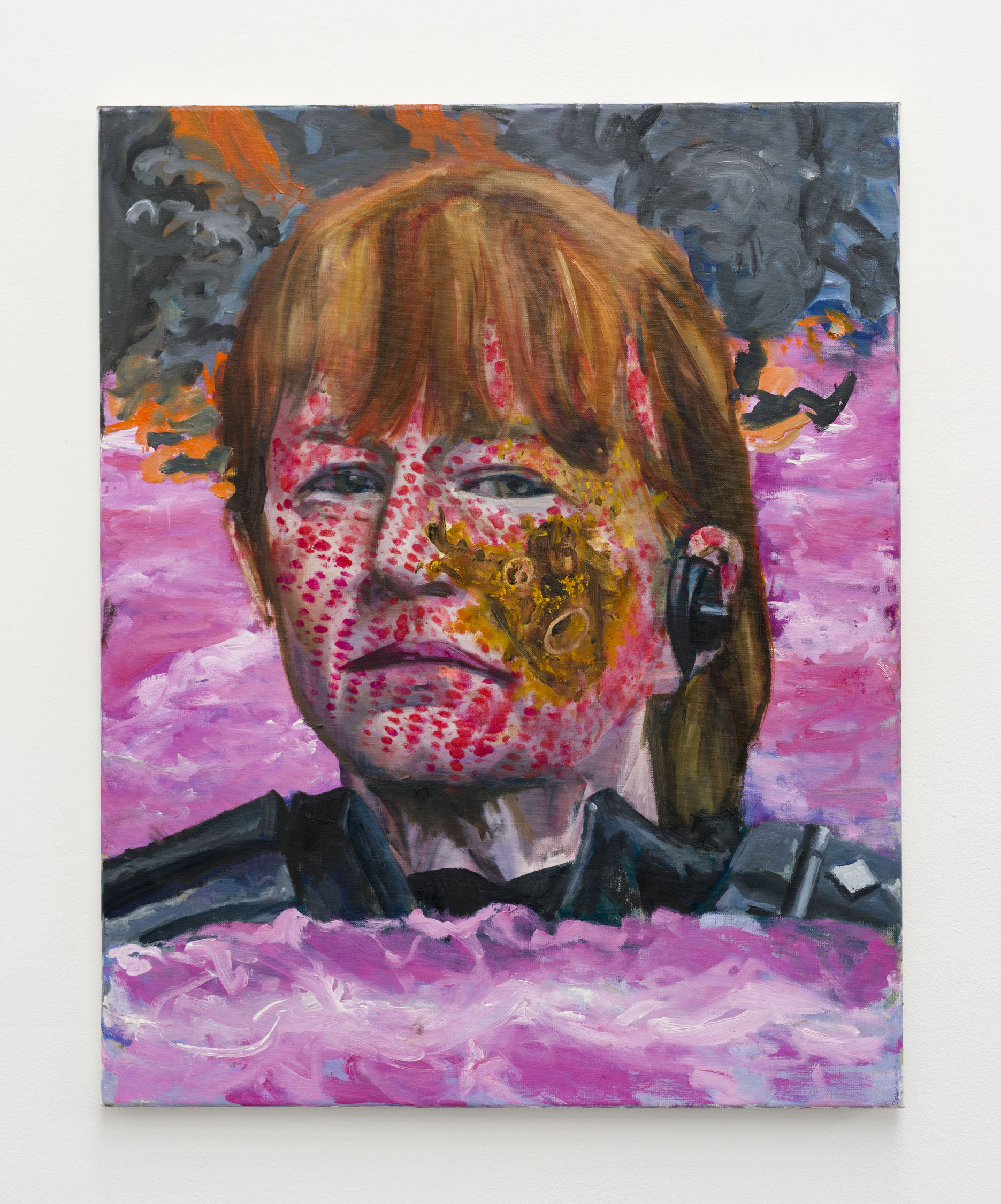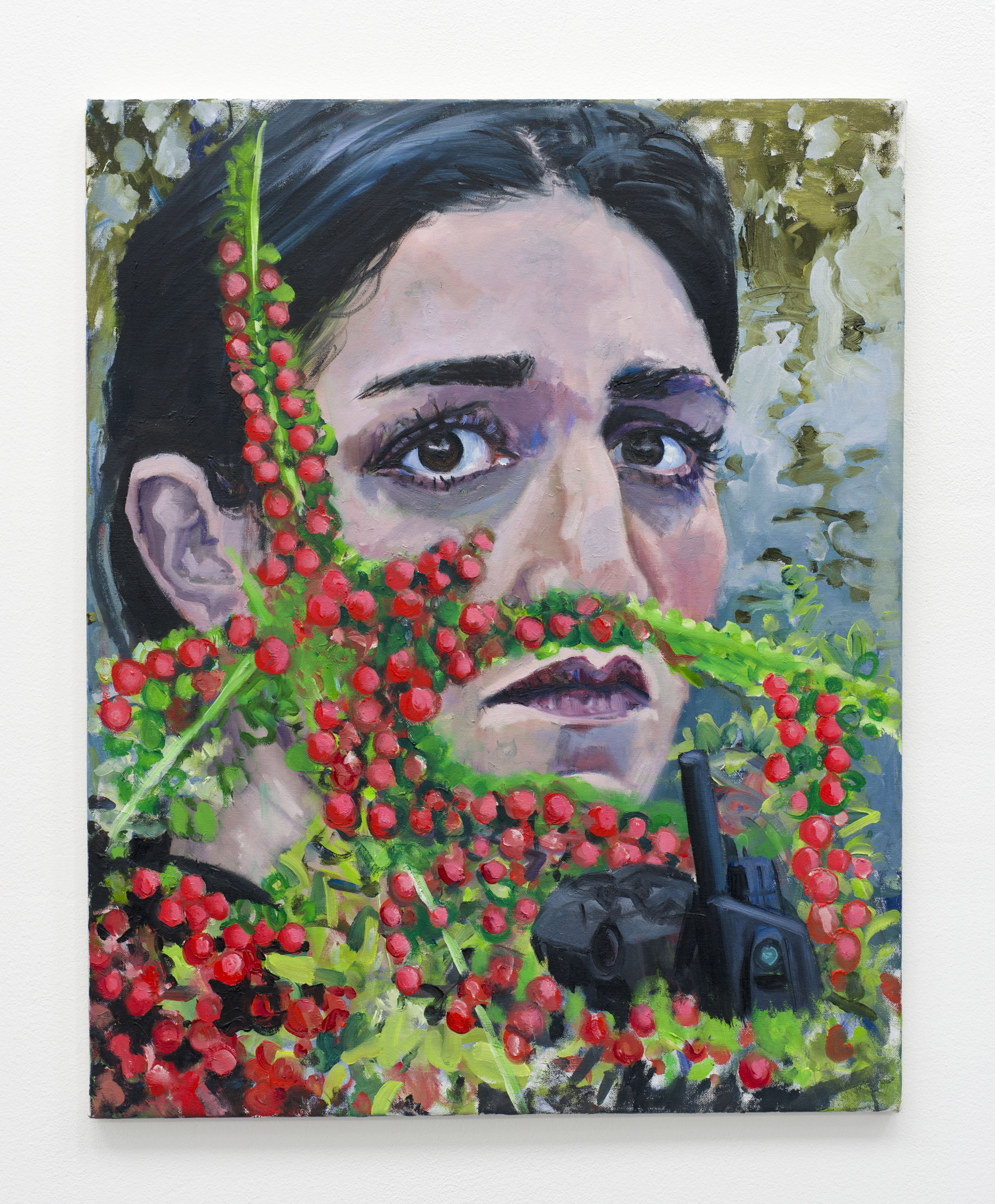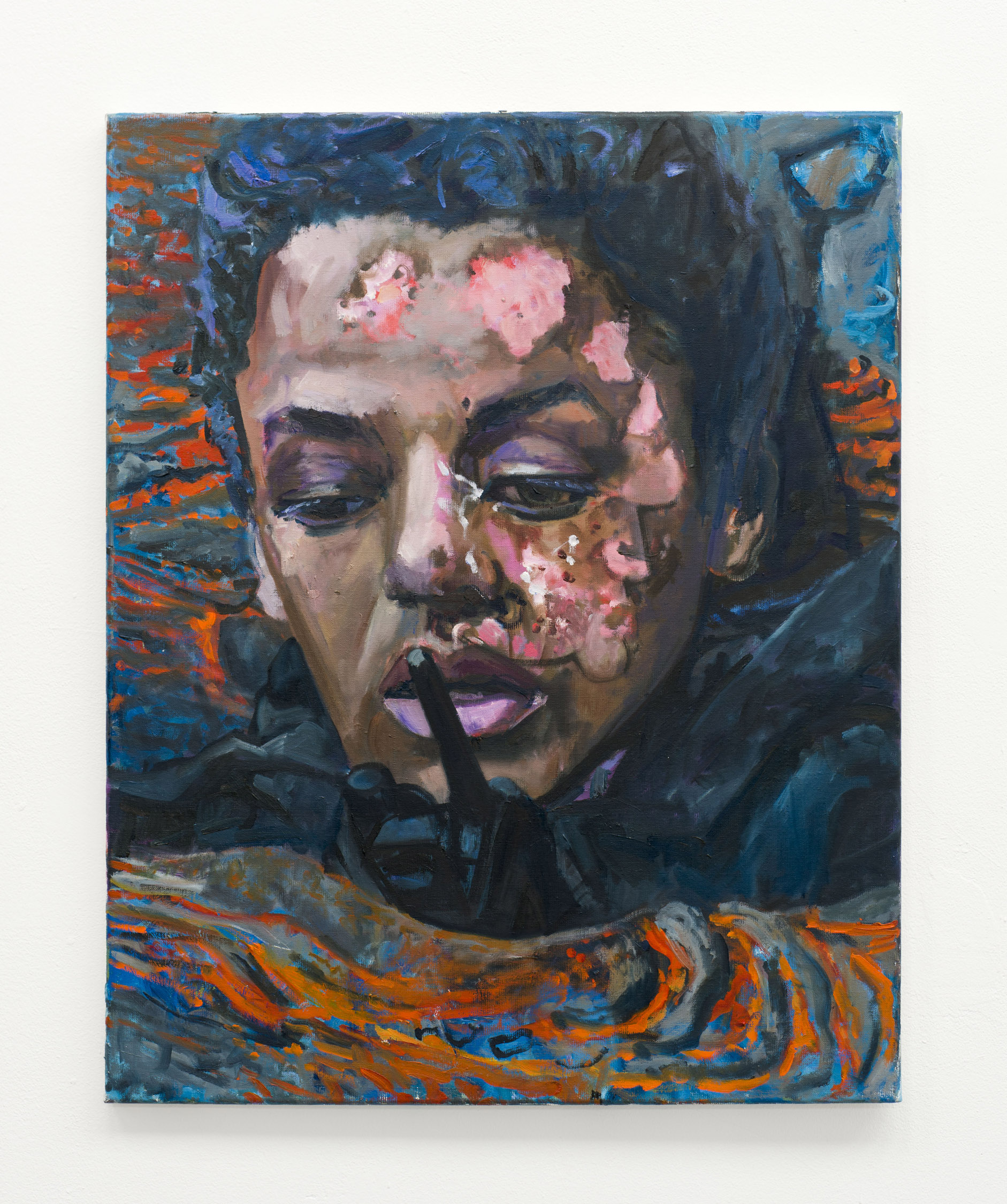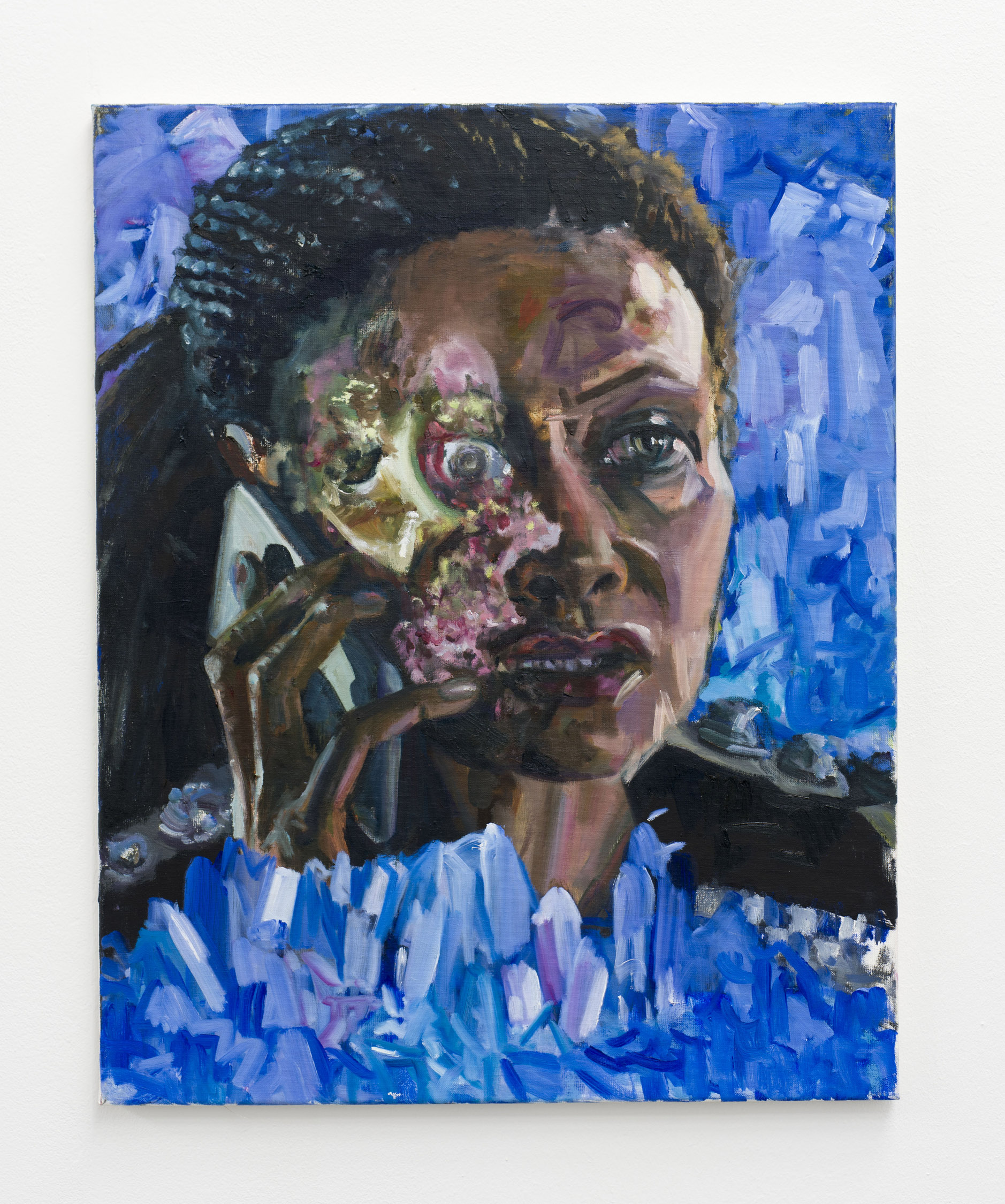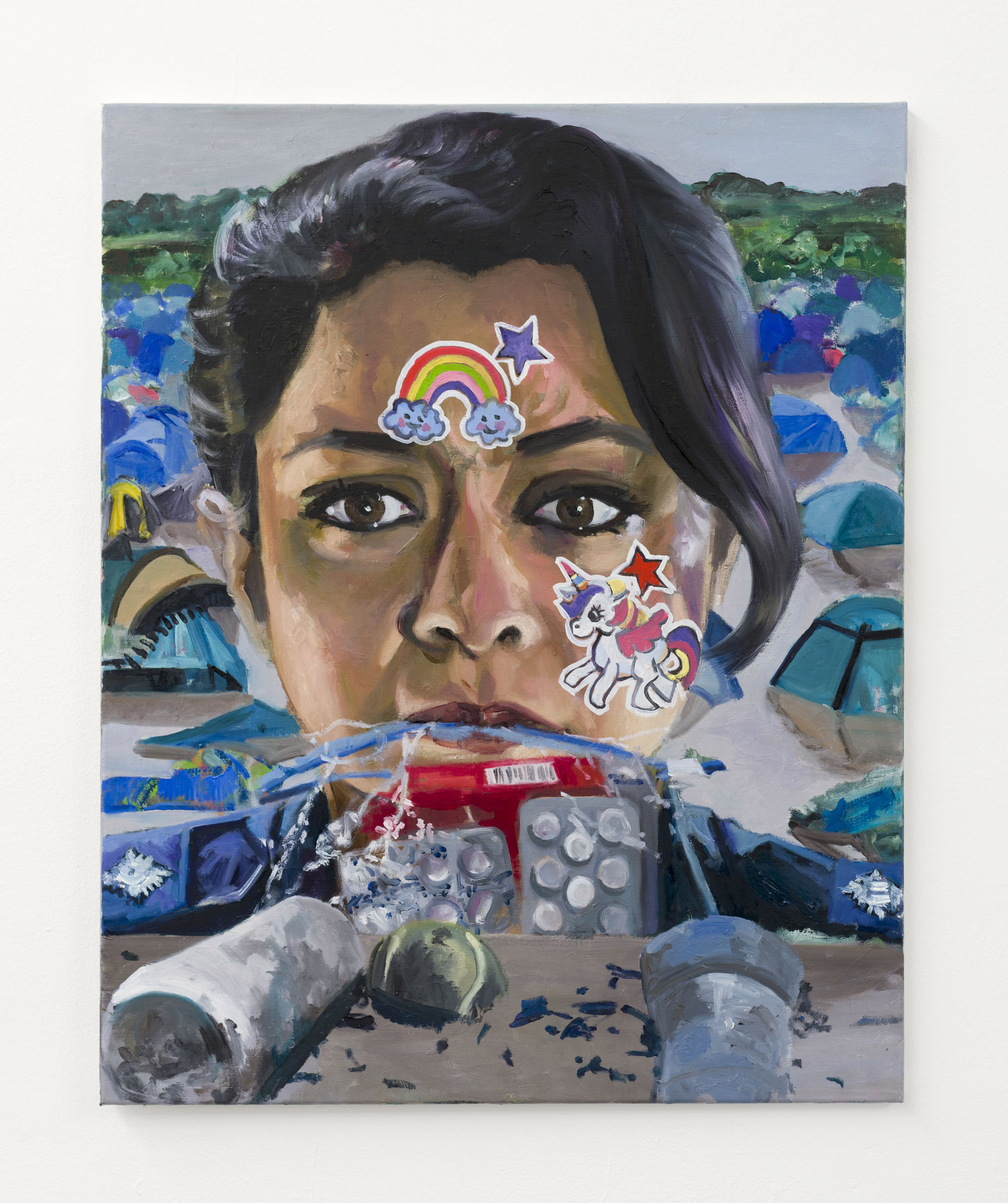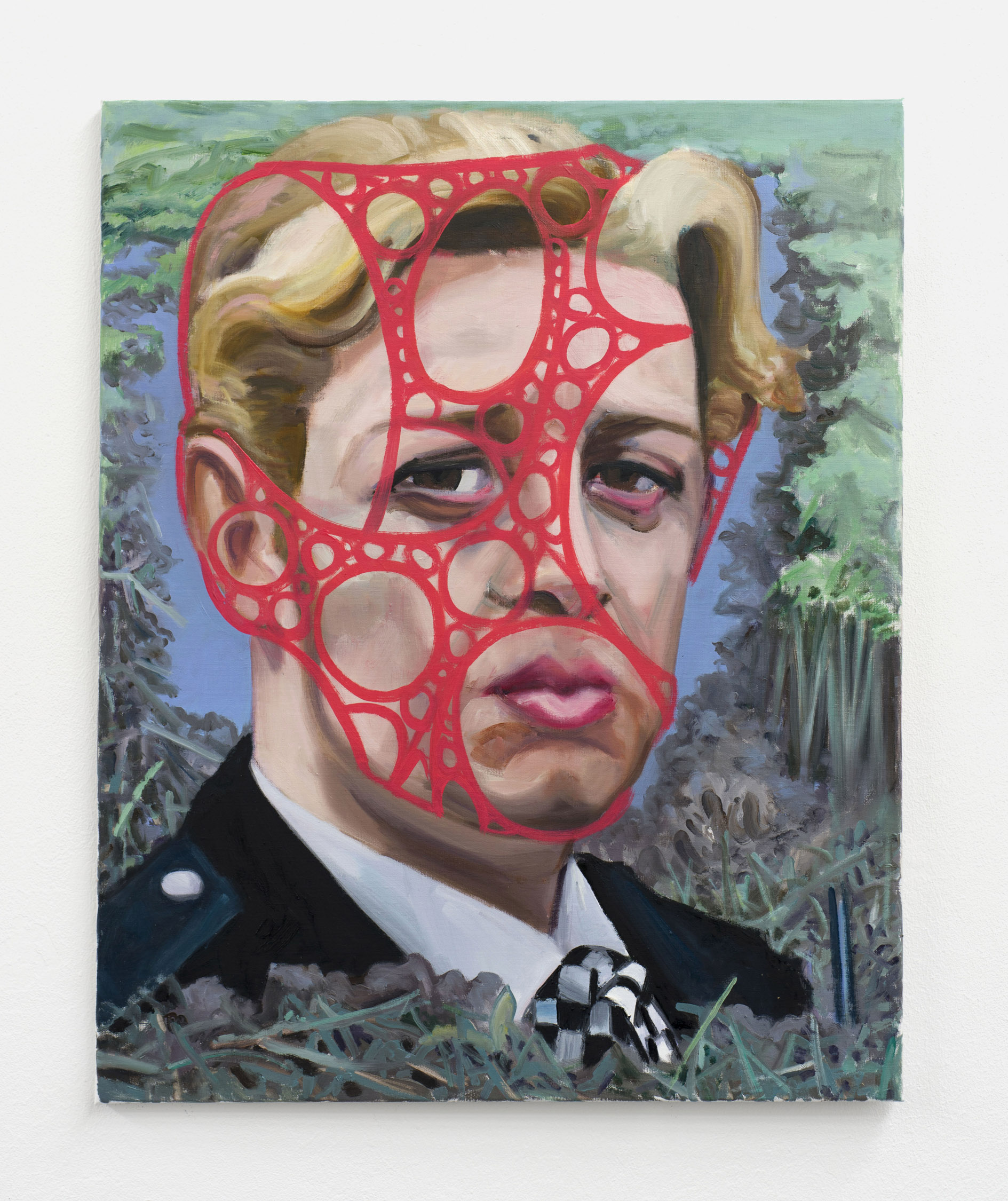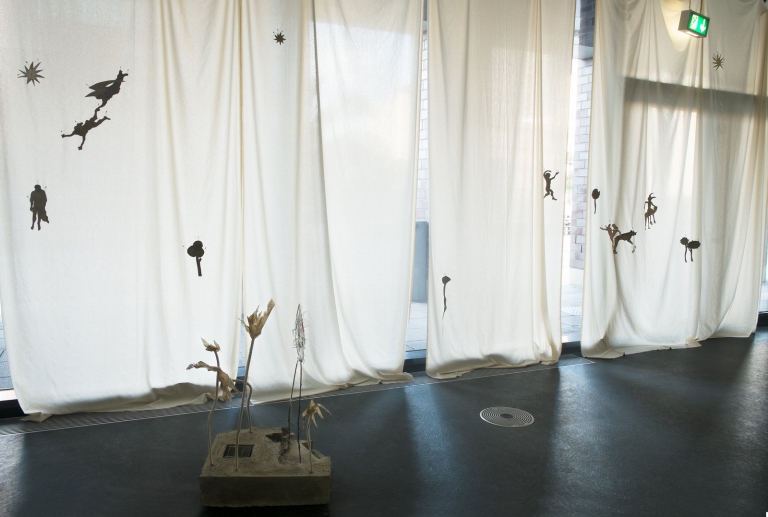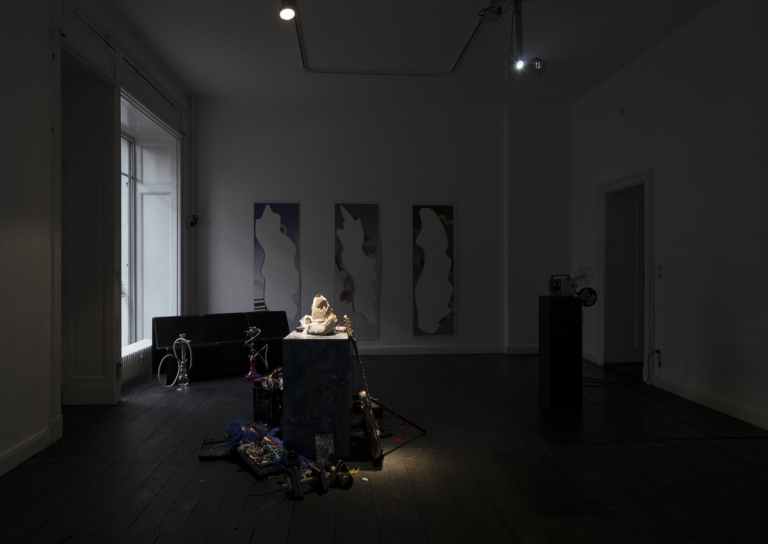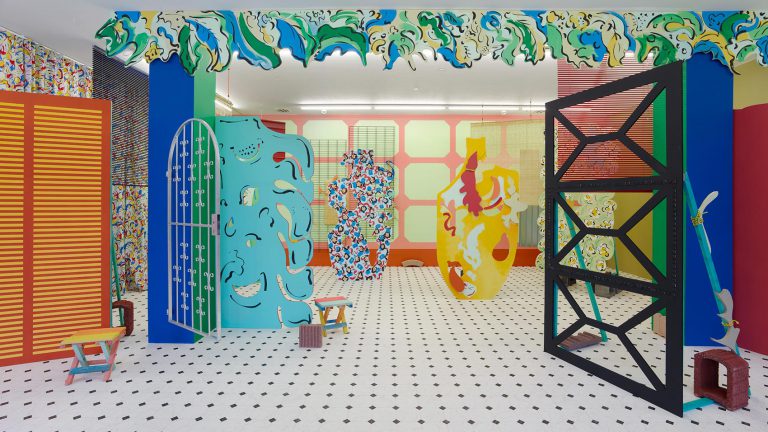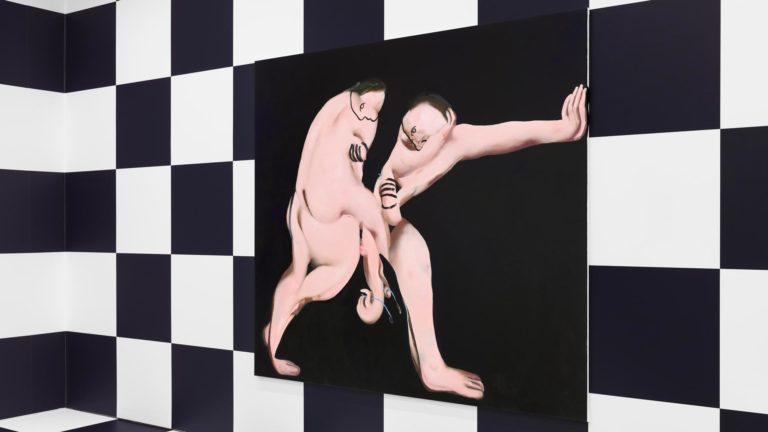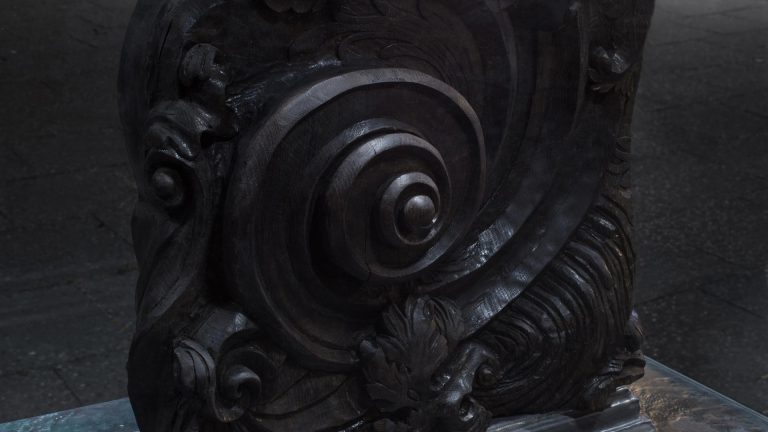Artist: Bod Mellor
Exhibition title: Scato
Venue: Neuer Essener Kunstverein, Essen, Germany
Date: February 24 – May 12, 2024
Photography: ©All images copyright the artist and Philipp Kurzhals/Neuer Essener Kunstverein
Bod Mellor’s paintings work with existing image material from TV and cinema, which is cannibalized, digested and excreted again with great relish. At the same time, it would be too easy to interpret this attitude towards the oversized, exclusively female film stars of the image sources as a rejection or critical thematization of an inauthenticity of the media sphere. Although Mellor defiles their stars and starlets, they also cultivate a contradictory, polyphonic attitude towards them, which is already inherent in the motif: the actress as a projection screen of (lesbian) lust, but here in the role of the policeman, the hated executive of a rigid class system as it prevails in English society. Translating this muddled complex of class, state power, media projections and queer sexuality into painting does not result in a reduction of complexity, as this medium has its own tradition and it’s associated rhetoric and customs. And reduction, on whatever level, is generally not Mellor’s thing – the themes should remain complex, convoluted and contradictory in a form of phenomenological honesty, even if every verbalization works against this. This also includes resisting the temptation to simplify problems from an Olympian or omniscient point of view in order to provide self-righteous answers.
In order to keep the pictures in a state of problematizing indecision, Mellor has developed a genuinely individual process of painterly image production. This involves undermining the speaker position and subjectivity of the author’s role by delegating the painting process to a multitude of identity constructions developed to varying degrees. In a sense, the phenomenon of knowing in oneself a conglomerate of complementary and/or contradictory personalities, from the sum of which our identity is constituted, is amplified for the painting process. As a result, Mellor thinks of the act of painting as a non-public performance in which various alter egos – sometimes more pronounced as complex characters, sometimes only developed on the basis of individual adjectives such as ’empathetic’, ‘malicious’, ‘cerebral’ or ‘lustful’ – execute individual brushstrokes or parts of the picture before the initiative passes to another personality chip. Such a process, which is designed to render polyphony and contradiction, understandably produces excessive results that celebrate an exhilarating excess of wit, color, composition and pathos. How else could you depict polyphony without turning down voices? Through their excessive character, the paintings rub up against what has been cultivated as the proverbial good taste, but at the same time question its omissions, and thus the price at which it comes about. A further factor in this idiosyncratic way of working is that Mellor has a palette of diverse styles and techniques (or hands, to stay with the metaphor) at their disposal, which means that two works do not necessarily point back to an identical authorship by virtue of the way they are made. It is probably for this reason that the work is realized in an insistent seriality, as the complexity of authorship can be presented in its entire spectrum in series. It also prevents the misunderstanding that this could be a form of détournement, in which corrupt media images are to be turned against themselves.
Remains to be seen who or what “Scato” is? Beyond the obvious fact that it is, or at least was, a prefix, “Scato” could give a name to the space that is constituted in or with Mellor’s pictures. Especially as the works shown at the Kunstverein, in comparison to the similarly structured Sirens series (2016-17), prevent a homogeneous localization in wetlands and, following on from this, a reading of the images that is based on Mellor’s sexuality. At its best, “Scato” opens up a space in which the fluid dynamics of class, desire, authority, power relations, language and, last but not least, our manifold involvements in them can be negotiated nonchalantly and, fortunately, without closure.
Bod Mellor (*1970), formerly Dawn Mellor, has had solo exhibitions at Migros Museum für Gegenwartskunst, Zurich; Focal Point Gallery, Southend-on-Sea; and Studio Voltaire, London. Their work has also been shown at Kunstverein Hamburger Bahnhof; Kunstverein Hamburg; Contemporary Art Centre Vilnius; Limerick City Art Gallery; Museum Arnhem; Witte de With Center for Contemporary Art, Rotterdam; MoMA P.S.1, New York; and Tate Liverpool.



